Origination Of Tanjore Painting
Thanjavur painting or Tanjore Painting is a classical South Indian painting style, which was inaugurated from the town of Thanjavur. The inspiration of this great southern art form traces back to around 1600 AD. Classical Tanjore paintings came into being in the late 16th century. The art, mainly classical music and dance, drew a lot of attention back in 1600 AD during the times of Vijayanagara Rayas. The Maratha rule of Tanjore lasted for about 2 centuries from the late 16th century after the Vijayanagara Rayas and during this time these paintings gained popularity. Maratha princes, Nayakas, Rajus communities of Tanjore and Trichy and Naidus of Madurai also patronised Indian Thanjavur Paintings from 16th to 18th century. The early paintings were embellished with real Diamonds and other precious stones, Semi-precious and artificial stones gained popularity only in later periods. These paintings are characterised by rich and vivid colors, simple iconic composition, glittering gold foils overlaid on delicate but extensive gesso work and inlay of glass beads and pieces or very rarely precious and semi-precious gems.
Table Of Contents:
Why is Tanjore Painting famous?
Types Of Tanjore Painting
How TanjorePainting is crafted
Price of Tanjore paintings
Why Tanjore Paintings are popular?
The art flourished in Thanjavur (தஞ்சாவூர்) pronounced Tanjore, the capital town of the Chola kinsfolk, and so got its name. Tanjore paintings are very popular because of their square measure, deeply frozen in tradition and still innovative inside limits. This art is sacred and dedicated.
Tracing its roots to the historical golden era of the first eighteenth century, Tanjore design is one in every of the various native art forms that India is noted. Originating in Tanjore, about three hundred kms from Chennai( Madras), that was the then capital of the Gupta empire, this way of art developed at the peak of cultural evolution achieved throughout that amount.
The Maratha people of India, who had been practicing painting for centuries, found new ways to depict the human body and naturalistic landscapes under the guidance of King Serfoji II. King played a particularly significant role in developing this artform. It was during the Anglo-Mysore wars that many Britishers came into Thanjavur and were surprised by the flourishing arts community there. They became eager patrons of Thanjavur art. Those Tanjore paintings were a result of the mingling of European and Indian styles in a lively fusion. The paintings had themes from Hindu mythology, European classical art, and Islamic art, which at times intersected with each other.
Buy the Tanjore paintings online from JLine Arts & Silks which will be perfectly suitable for the puja rooms in residences, arcades in major hotels and lobbies in company Offices. They conjointly build nice gifts for Diwali, weddings and alternative special occasions.
Types of Tanjore Paintings
Venkateshwara or Balaji Tanjore Painting
Venkateshwara also known as Venkatachalapati Srinivasa and Balaji is a form of the Hindu god Vishnu. In Balaji Tanjore painting, Lord Balaji is shown or visualized having a tilakam on forehead, ‘Conch’ on the left shoulder, ‘Disc’ on the right shoulder, ‘Bhudevi’(Goddess Earth) and ‘Sridevi’ (Goddess of Wealth) at the heart, left hand in receiving posture, right hand in a bestowing posture, both hands are decorated with ‘adishesha’ / snake and coins/prosperity pouring in at the feet. According to Vedic scriptures, this particular position is called the Varada Hasta Mudra — the hand that offers blessings.
Purchase the Balaji Tanjore painting online from JLine Arts and get the blessing of the Lord of seven hills & have a peaceful and prosperous life.
Our vastu tips will be highly helpful for placing the Balaji Tanjore painting at your place.
Where To Place Balaji Tanjore Painting (Vastu): If Lord Venkateshwara is the family deity, then the photo has to be kept East facing. If Lord Venkateshwara is the kula deity (considering the lord as fore father), then the photo has to be kept South facing. If Lord Venkateshwara is kept with Sridevi or Lakshmidevi for prosperity, then photos have to be kept North facing.We don’t keep Lord Venkateshwara’s photo facing west side.
Ganesha Tanjore Painting
Ganesha Tanjore paintings come with a host of benefits. This Lord of good fortune who provides prosperity, fortune and success, and who is considered as a Lord of new beginnings and the remover of obstacles of both material and spiritual kinds. From Hindu mythology Lord Ganesha, spelled Ganesh, also called Ganapati, elephant-headed Hindu God is a popular theme in Tanjore paintings.
This painting is considered to be auspicious and is believed to keep away negative vibes or energy. Many believe that having them around will lead to the successful completion of tasks. Hence Ganesha Tanjore paintings are of great significance to people around the world and thus are in great demand.
Buy Ganesha Tanjore painting online from JLine Arts and make all the obstacles away from your life.
Where To Place Ganesha Tanjore Painting (Vastu): Vastu experts suggest that the west, north and northeast directions are perfect to place the Ganesha. Make the painting face the north direction, since this is where Lord Shiva resides and it is considered very auspicious.
Krishna Tanjore Painting:
The great exponent of the Bhagavad Gita, Krishna is one of the most powerful incarnations of Vishnu, the Godhead of the Hindu Trinity of deities. Lord Krishna, the Supreme God who destroys sins and bestows his devotees with Wealth. Of all the Vishnu avatars he is the most popular, and perhaps of all Hindu gods the one closest to the heart of the masses. Krishna was dark and extremely handsome. The word Krishna literally means ‘black’, and black also connotes mysteriousness.
Get the beautiful Krishna Tanjore paintings online from JLine Arts. Lord Krishna is sure to bring peace, wealth and prosperity and to get rid of all the sins from one’s home and represent love, sacrifice, devotion and positivity.
Yashoda Krishna Painting: Yashoda Krishna is an Iconic painting of unconditional love of a mother for her child. This painting depicts the pure love of Yashoda. Krishna won everyone’s heart and proved a born leader, But to Yashoda he was her darling little child even though he was always up to some mischief or the other! Purchase this Yashoda Krishna Tanjore Painting and feel the presence of Krishna with you.
Radha Krishna Tanjore Painting: Paintings of Radha-Krishna symbolize the eternal love affair of mortal and divine. The love story of Radha Krishna is often interpreted as eternal and majestic that goes beyond any realm. With time, their tale showered the world with the knowledge of divine unification between the Jivatma and Paramatma – the individual self and the universal self. Radha Krishna’s love story is the most beautiful example of the “supreme emanation of divine vibrations”. No wonder they are the best gift for every occasion to bring in the good vibes in your humble abode. Feel the magic with the splendor of this remarkable Krishna Radha Painting who seem to be enamored with each other. These adorable Radha Krishna paintings will add vibrancy to your home and will also gracefully fill up the space on your wall.
Baby Krishna Tanjore Painting: As a baby, Krishna embodies a joyous playfulness. He is the embodiment and distillation of the infant’s innocence and the love that parents feel towards their babies. Baby Krishna is not simply cute; he is also a prankster and a troublemaker. A divinely adorable baby Krishna Tanjore painting will touch not only Vaishnavite hearts but pull at all heart strings.
Where To Place Krishna Tanjore Paintings (Vastu): The mesmerizing, divine, and electrifying manifestation of Lord Krishna and Goddess Radha is the best fit for your home. According to Vastu, Radha Krishna paintings or images can be kept in the living room and bedrooms. The best direction or place to hang the paintings is the north-east direction of your room. It is an ideal way to hang paintings of any deities.
Peacock Tanjore painting:
The peacock is one of the most beautiful of birds. In history, myth, legend and lore, the peacock symbolism carries portents of: Nobility, Holiness, Guidance, Protection and Watchfulness.
In Hindu mythology and stories, the peacock makes an appearance again and again, sacred in its very existence. Believed to have been created from the plumage of Garuda, the mythical bird, the peacock is seen as the vehicle of Kartikeya. Shri Krishna, the perfect lover, is crowned with peacock feathers on his head, vibrant and playful. The supreme being Vishnu’s consort Lakshmi is also often symbolized by a peacock. Goddess Saraswati, the deity of music and knowledge, is associated with this beautiful bird too in the form of Citramekhala. In her company, the bird represents patience, kindness, and compassion, along with knowledge. Get this beautiful Peacock Tanjore painting online from JLine Arts and add more protection to your life.
Why To Buy Peacock Tanjore Painting: According to Vastu Shastra, having a peacock Tanjore painting in your home or office brings you a lot of success and power in your life and career. Peacock painting is also a symbol of speed, vitality, and strength, so it is often displayed in the office for an early job promotion
How Our Artists Craft Tanjore Paintings
Tanjore paintings are panel paintings mainly done on the wooden planks and hence also referred as palgai (wooden plank) padam (painting). The plank used was originally wood of jackfruit tree but nowadays its plywood over which the canvas is pasted with Arabic gum. Then French chalk or powdered limestone and a binding medium are used for coating the canvas evenly and then left for drying. The canvas was then ready for painting. The artists then did the detailed sketch of the painting using stencils. A paste of powdered limestone and a binding medium called sukkan or makku were used for creating the Gesso work. Semi-precious gemstones and gold leaves of varied hues were embedded in particular areas such as pillars, arches, thrones, dresses etc. Finally, the sketch was filled with colours. In the old days artists used natural colours like that of vegetables and mineral dyes. Today they use synthetic colours. Vibrant colours such as bright red and dark brown colours were used to mark outlines. Background of the paintings was mostly created with red colour though blue and green colours were preferred as well. Scholars say that the red background in Tanjore painting is a distinct mark. Lord Vishnu apt enough is coloured blue and Lord Nataraja chalk white. Yellow colour is used for the Goddesses. Blue colour is used for the sky but black was employed on occasions.
How to buy Tanjore Painting Online?
There are plenty of websites that sell Tanjore paintings online, but buying a good quality Tanjore painting online is not an easy task. How do you know if you’re getting value for money? There are many things that you need to consider before you invest. A lot of people don’t know what to look for when they’re buying Tanjore paintings online. They assume that all these paintings are the same, but there is a big difference between a finely crafted Tanjore painting and an artificial painting. Making Traditional Tanjore paintings in the old way is a very time-intensive process and increases Tanjore painting costs significantly.
What is finely crafted Tanjore Painting?
The use of gold foil in Tanjore paintings serves two different purposes. It not only adds a radiant glow to the painting, making it more attractive, but also protects the painting, makes it more durable, and increases its life.
Quality acrylic paintings and genuine gold foils used to make the paintings are considered as finely crafted traditional Tanjore Painting.
What is an artificial Tanjore painting?
The painting could probably be fake or use synthetic gold foil. A fake gold foil will look almost similar to the original gold foil, making it difficult for anyone to distinguish between the two. To recognize the original gold foil, check the color of the gold foil. A synthetic or fake gold foil will have a dark yellow color. Moreover, the synthetic gold foil will fade within a few years, while the real gold foil will remain the same way even after decades.
 USD $
USD $ INR ₹
INR ₹ EUR €
EUR € GBP €
GBP € CAD $
CAD $ SGD $
SGD $ AUD $
AUD $

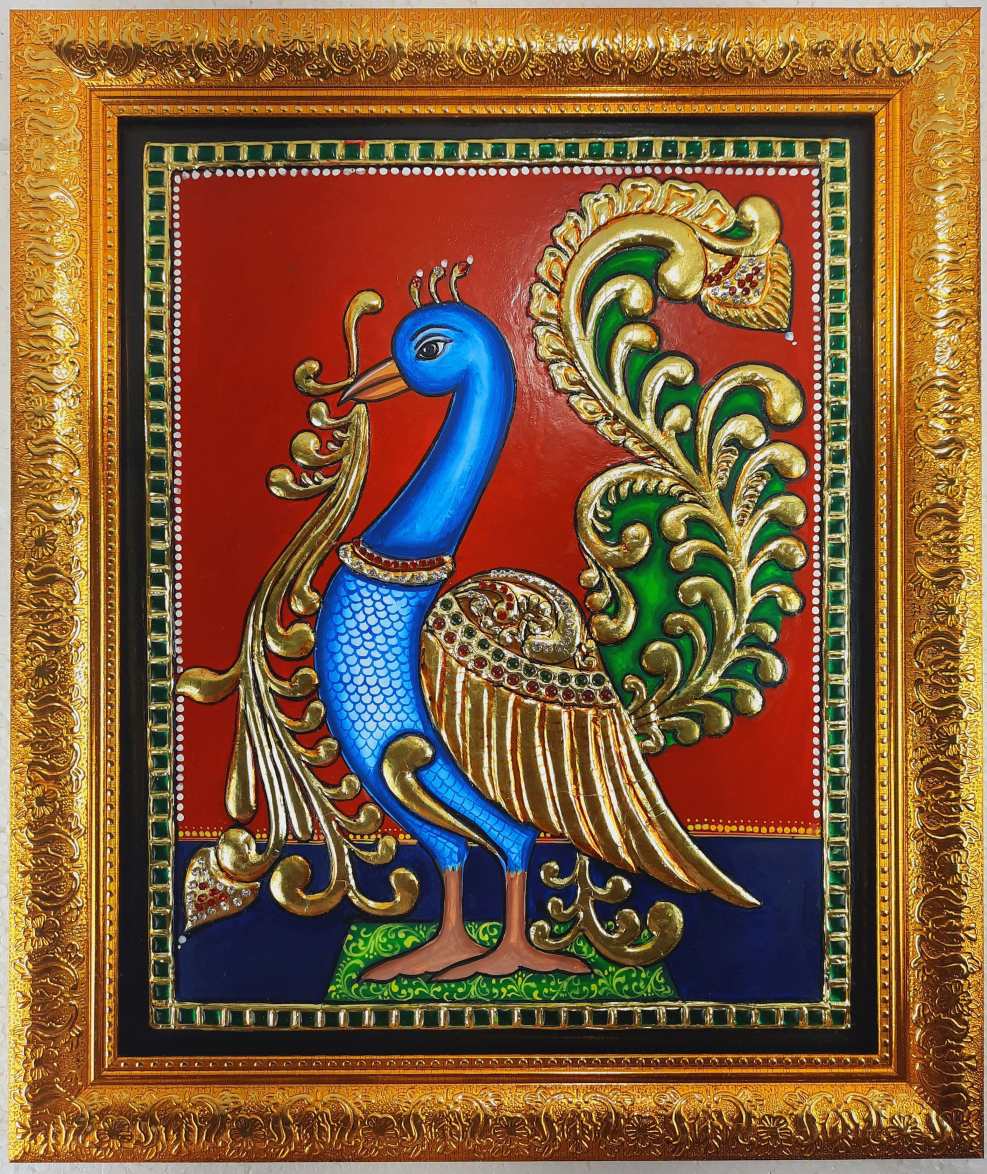
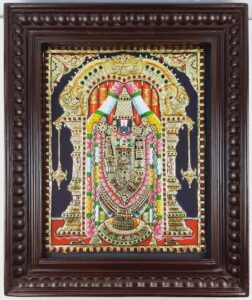
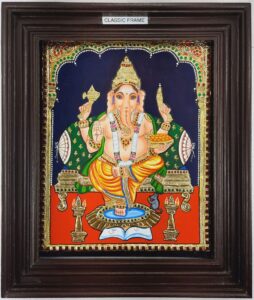
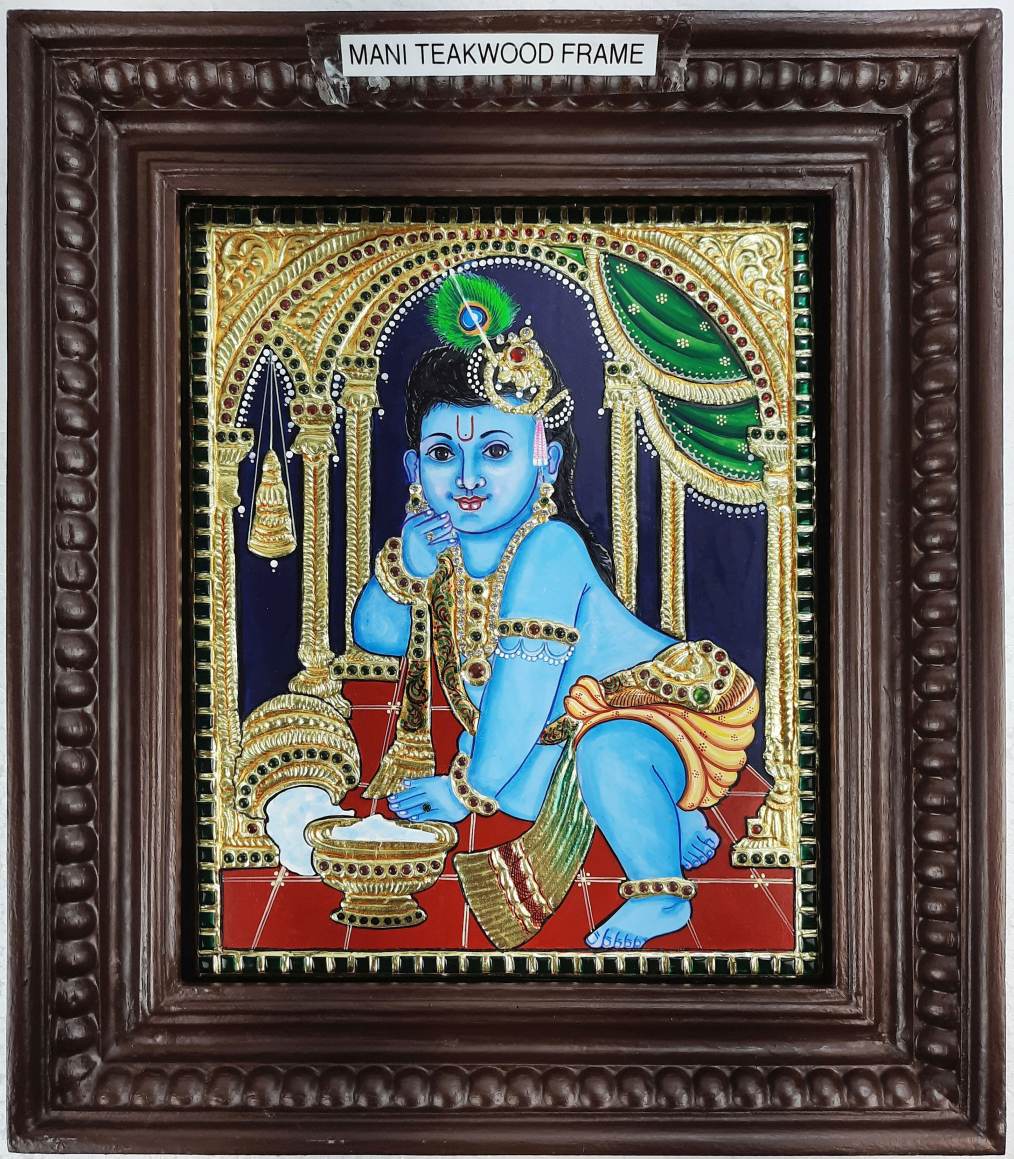
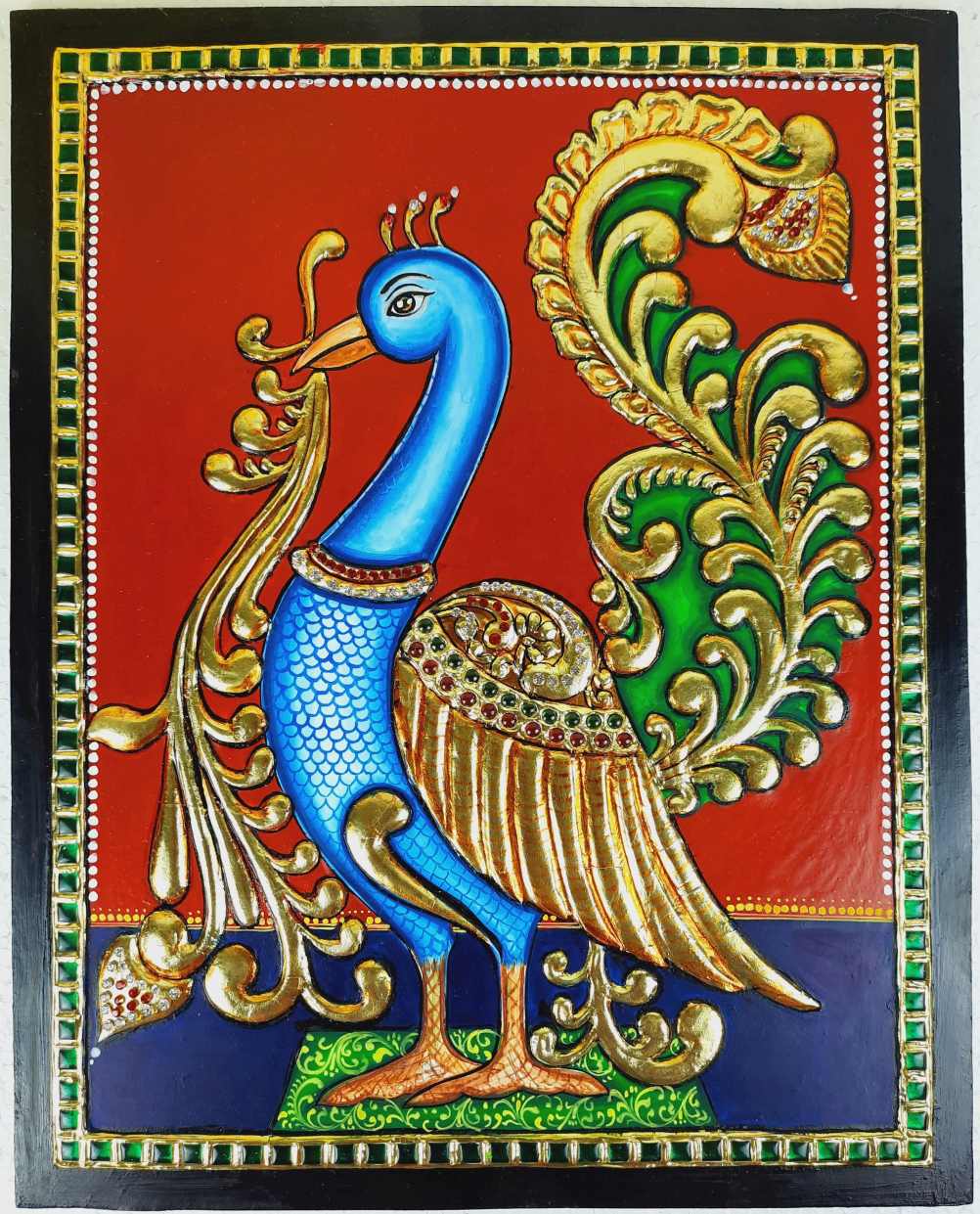

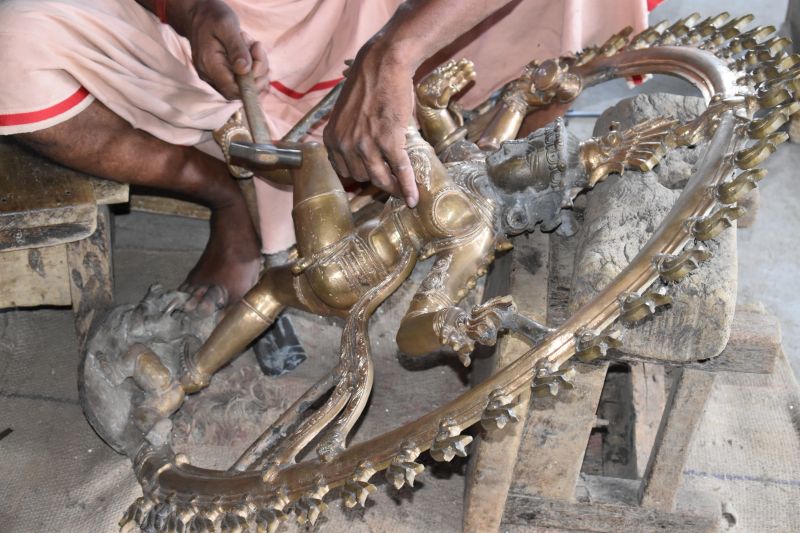

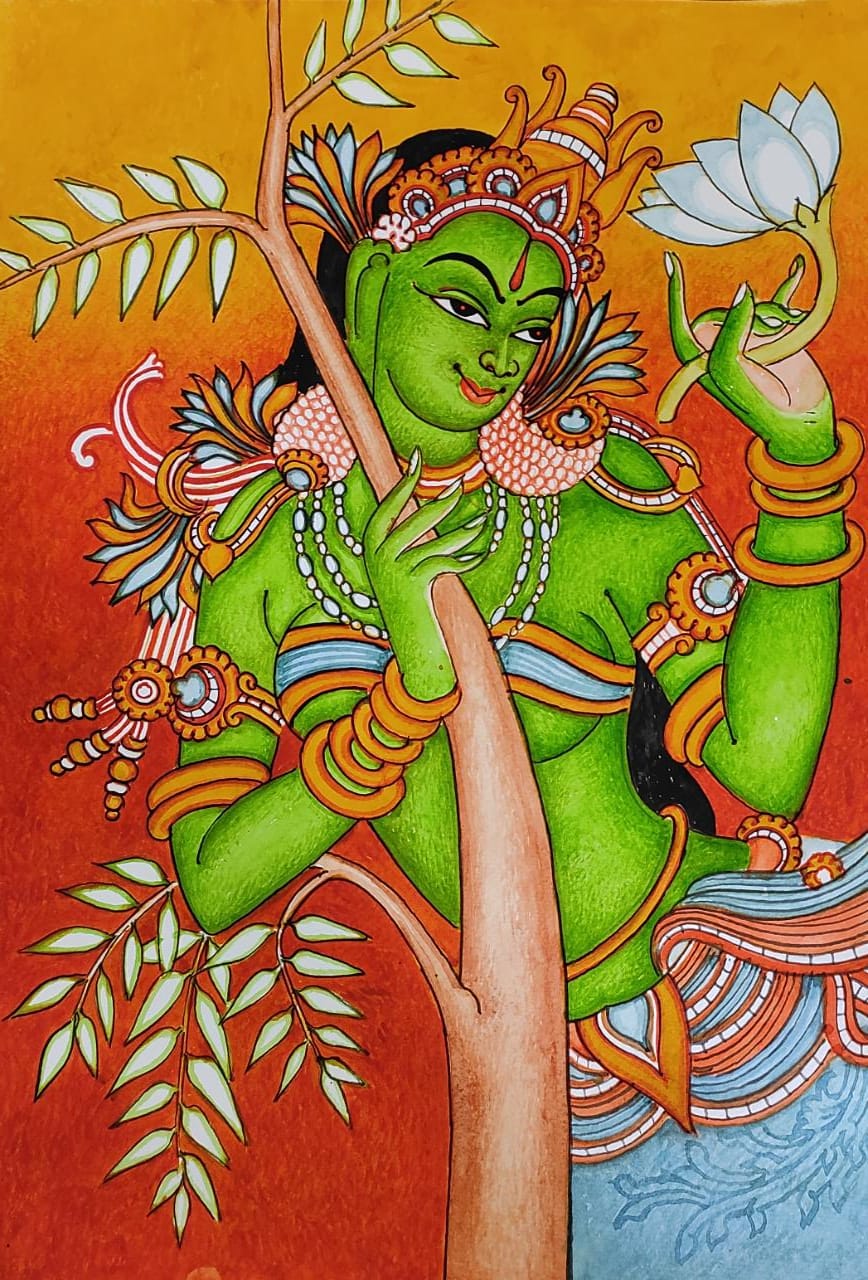
Leave a Reply
You must be logged in to post a comment.